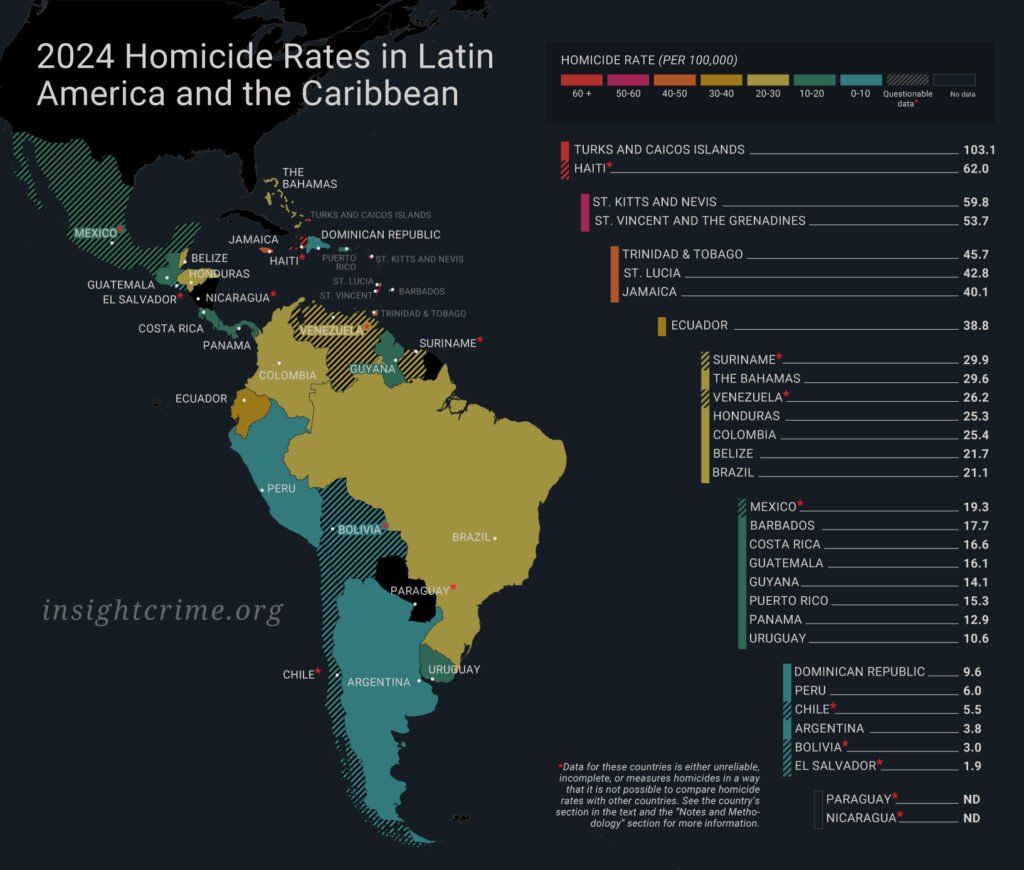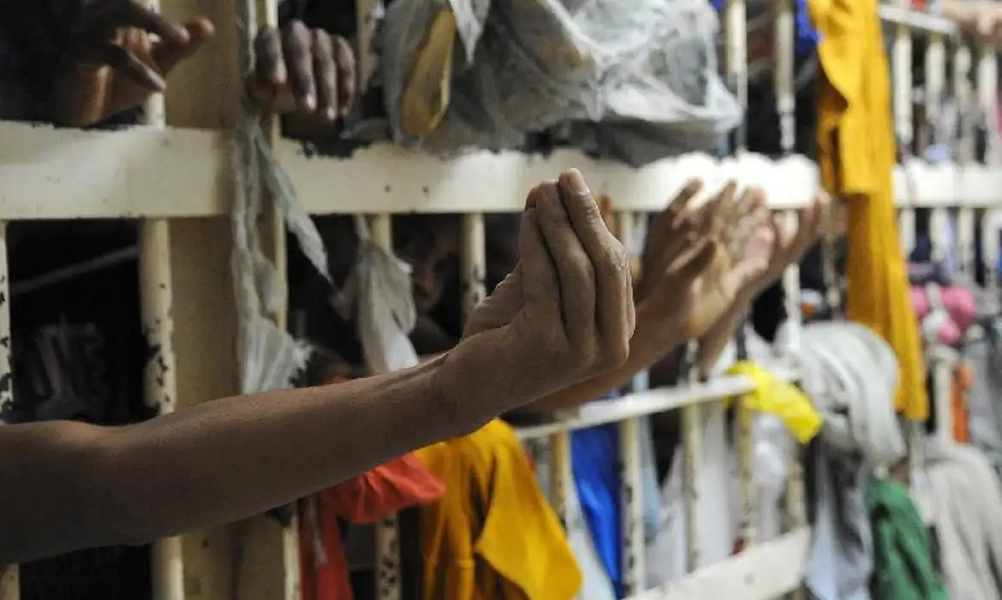In 2024, Latin America and the Caribbean recorded 121,695 homicides, averaging 20.2 per 100,000 inhabitants, similar to 2023. While South America saw a slight decline in homicide rates, the Caribbean remained the most affected region. Organized crime and territorial disputes continued to be the primary drivers of violence, though some countries experienced improvements due to security strategies and shifts in criminal group dynamics.
This Content Is Only For Subscribers
To unlock this content, subscribe to INTERLIRA Reports.

The Caribbean: Rising Homicide
The Caribbean experienced the region’s largest increase in homicide rates, driven by various localized factors. Due to the small populations of many Caribbean nations, isolated incidents can significantly impact national rates. Most of the increases are linked to gang violence, as seen in Puerto Rico, Saint Vincent and the Grenadines, the Bahamas, Panama, and Saint Lucia.
In Barbados, the breakdown of a peace agreement between rival gangs led to a spike in violence. In Turks and Caicos, sophisticated arms and drug trafficking networks, along with logistical challenges for law enforcement, contributed to higher homicide rates. Haiti, which saw a 51.6% increase, exemplifies a country where gangs exert full social control, carrying out massacres and expanding their territories amid state absence.
Haiti remained a major concern, with homicides rising 51.6% to 62 per 100,000. Since the assassination of President Jovenel Moïse in 2021, gang violence has escalated dramatically, with criminal organizations exercising near-total control over many areas. The emergence of the Viv Ansanm gang alliance has exacerbated the crisis, allowing criminal groups to coordinate attacks on state institutions and civilians alike. Despite the deployment of a United Nations-backed multinational security force, violence in Haiti continued to spiral out of control in 2024.
South America: A General Decline
In South America, homicide rates showed an overall decline, though some countries experienced significant increases. Peru saw a 35.9% rise, driven by organized crime linked to illegal mining and extortion. Colombia recorded a modest 1.9% decline, influenced by government negotiations with armed groups, though some regions, such as Atlántico, saw increased violence due to drug trafficking disputes.
Ecuador experienced a 12.8% drop in homicides, but criminal violence remains persistent as gangs adapt and become more autonomous. In Chile, foreign criminal organizations like Tren de Aragua have expanded their presence, raising security concerns. The country’s prison system is also becoming increasingly overcrowded, raising fears that organized crime may consolidate power behind bars.
Brazil: Rising Cybercrime and the Restructuring of Organized Crime
Brazil’s homicide rate fell to 21.1 in 2024, continuing a decline since 2019. One key factor in this reduction is the shift of criminals toward cyber fraud and online scams. The country has become one of the main targets of cybercriminals in Latin America, with banking fraud and digital attacks rising significantly. Criminal organizations have embraced digital crime as a less risky and more lucrative alternative to traditional forms of organized crime, contributing to the overall decline in homicides.
Meanwhile, territorial disputes among criminal factions continue to shape violence in different regions. The expansion of the Red Command (CV) and First Capital Command (PCC) into the North and Northeast has led to greater factionalization of these areas. States such as Bahia, Ceará, and Maranhão have seen rising levels of organized crime activity, as local gangs either align with or resist the influence of these larger groups.
However, one of the key developments in 2024 was the truce between the PCC and CV. Since 2016, these two factions have been engaged in violent conflicts across the country, leading to significant bloodshed. In 2024, the two groups reportedly reached a ceasefire, if this agreement holds, Brazil’s murder rates may continue to decline in the coming years as criminal organizations focus more on economic expansion rather than territorial warfare.
Analysis:
Homicide trends in 2024 reflect progress and persistent challenges. While some countries reduced violence through security strategies, others struggled with organized crime and gang conflicts. The Caribbean remained highly volatile, while South America saw a general decline, though hotspots like Peru and Ecuador remain concerning.
To contain crime waves, several countries declared States of Emergency, including Honduras, Belize, Trinidad and Tobago, El Salvador, Mexico (Chiapas), Ecuador (State of Internal Conflict), Jamaica, and Peru. These measures expanded police and military powers but raised concerns about long-term effectiveness.
While temporary crackdowns can reduce violence, sustainable crime prevention strategies are essential. Governments must tackle underlying issues such as corruption, impunity, and socio-economic inequalities to ensure lasting security improvements.




